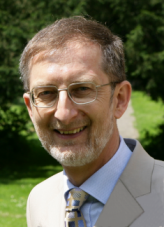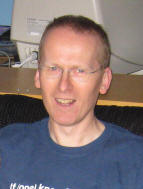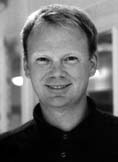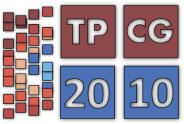Keynotes
Where the Wild Researchers Are.
Phil Willis
Professor Phil WillisUniversity of Bath Director, Centre for Digital Entertainment
www.digital-entertainment.org
ABSTRACT: The research skills of academics and the truly demanding problems that industry encounters all the time make for a really challenging and potentially productive meeting ground. Yet the UK has struggled to bring the two sectors together in a sustained and convincing way. Industry sees the traditional PhD degree as an entry qualification for a university career. The research pattern - 3 years of highly-focused research - is also an issue; industrial needs are no less intellectually demanding but are usually solution-centred and immediate. EPSRC have been addressing this by creating Centres such as ours, heavily funded (we have 50 research studentships to give away), directly connected to a vibrant industrial sector (ours is computer games, film post-production and animation) and based on the Engineering Doctorate rather than the PhD. A key difference is that the student spends most of their research time in the company, exposed to the state of the art but working on one challenging problem after another. It is a placement programme: research in the wild. EPSRC's goal is for a complete change of thinking about research and its value; within the universities, within companies and indeed within the student body. This talk will give you our experience to date on making this happen, where it really wins and why you too should know about it.
BIOGRAPHY: Phil Willis started his research life in the Engineering School at the University of Sussex, where he worked on real-time graphics for flight simulators; basically a hardware precursor of the graphics engine later used in Silicon Graphics machines and recent graphics cards. He moved to Bath in 1979 and, to his surprise, is still there. He did though take Computer Science from being a group within the Department of Mathematical Sciences - which he has headed - to become a Department in its own right, which he now heads. The recent RAE show the Computer Science submission to have the third highest-rated outputs in the UK and the second highest at Bath. Some years ago he formed the Media Technology Research Centre and directed it until recently. This was when he obtained £6.3 million to create and direct the national Centre for Digital Entertainment, a joint project with the NCCA at Bournemouth University. The Centre's activity is at the Centre of the talk.
Ridge Walks in the Graphics Highlands
Avoiding the falls, reaching the summit.
Neil Gatenby
Dr Neil Gatenby,

Lightwork Design
ABSTRACT: Writing a high performance photorealistic
renderer is never easy at the best of times. Add to this the problem of
writing one as an SDK, for a company whose customers service around 3
million end users, and one gets some feel for the complexities that can
arise. Some users want a simple image of reasonable quality in no great
hurry. Others require a fantastic image, of something incredibly
complicated, just as soon as the many chips on their hugely expensive
computer have stopped smoking! This talk will discuss some of the
issues that arise in writing such a renderer; from the demands made by
the sales team to the details of how one designs and implements
something which makes best use of the many different platforms on which
the code must run. Use of the GPU, CPU multi-processing, global
illumination and anti-aliasing will all be covered in this talk.
Example images and a live demo will also play their part.
BIOGRAPHY: Neil Gatenby is a senior software engineer and lighting simulation specialist at Lightwork Design. Established in 1989, Lightwork Design has continually developed Lightworks to provide customers with innovative and market-focused solutions for the creation of powerful and easy-to-use rendering applications. Lightworks is embedded in over 80 software applications and used by more than 3 million users worldwide. Applications that incorporate Lightworks include: NX and Solid Edge from Siemens PLM, Pro/Engineer and CoCreate from PTC, ArchiCAD from Graphisoft, ARCHline.XP from CadLine, ARCHITREND from Fukui Computer, Cobalt from Ashlar, Configura and InstantPlanner from Configura Sverige AB, form.Z from auto.des.sys, and NavisWorks from Autodesk.
Rendering and interacting with large scale volumetric data in
medical applications.
Anders Ynnerman

Professor Anders Ynnerman,
Linköping University
ABSTRACT:
This talk will
present recent advances in medical volume rendering from the Center for
Medical Image Science (CMIV) and the Norrköping Visualization and
Interaction Studio (NVIS), both at Linköping University in Sweden. The
first part of the talk will address the issue of data reduction and
multi resolution representations for Level-of-Detail selection using the
knowledge encoded in transfer functions. Knowledge encoding can also be
used to obtain fuzzy classification of unsegmented data and it will be
demonstrated how classification can be used to improve transfer function
design and enhance features of interest. Other aspects of medical volume rendering such as the use of
illumination models to enhance depth cues and to convey additional
information from other co-registered sources will also be covered. The
second part of the talk will present methods for haptic (force feedback)
interaction with volumetric data. New methods for the design and
implementation of haptic modes for medical data will be presented and
haptic feedback for time resolved volumes will be demonstrated.
Throughout the presentation medical examples of volume rendering will be
shown such as full body virtual autopsies using the presented methods.
BIOGRAPHY: Professor Anders Ynnerman received a Ph.D. in physics from Gothenburg University. During the early 90s he was doing research at Oxford University, UK, and Vanderbilt University, USA. In 1996 he started the Swedish National Graduate School in Scientific Computing, which he directed until 1999. From 1997 to 2002 he directed the Swedish National Supercomputer Centre and from 2002 to 2006 he directed the Swedish National Infrastructure for Computing (SNIC). Since 1999 he has held a chair in scientific visualization at Linköping University and in 2000 he founded the Norrköping Visualization and Interaction Studio (NVIS). NVIS currently constitutes one of the main focal points for research and education in computer graphics and visualization in the Nordic region. He is also one of the co-founders of the Center for Medical Image Science and Visualization (CMIV) and he is currently the chair of the CMIV scientific council. He is involved in several spin-off companies in the area of visualization and scientific computing. Ynnerman’s current research interest lies in the area of visualization of large scale and complex data sets with a focus on volume rendering and multi-modal interaction. Ynnerman is an elected member of the Swedish Royal Academy of Engineering Sciences and a board member of the Swedish Research Council. In 2007 Ynnerman was awarded the Akzo Nobel Science award and the Golden Mouse award for Swedish IT-person of the year. In 2007 he co-chaired the EuroVis conference and in 2008 he co-chaired the Symposium on Volume Graphics. He is the general chair of Eurographics 2010 organized by Linköping University.




